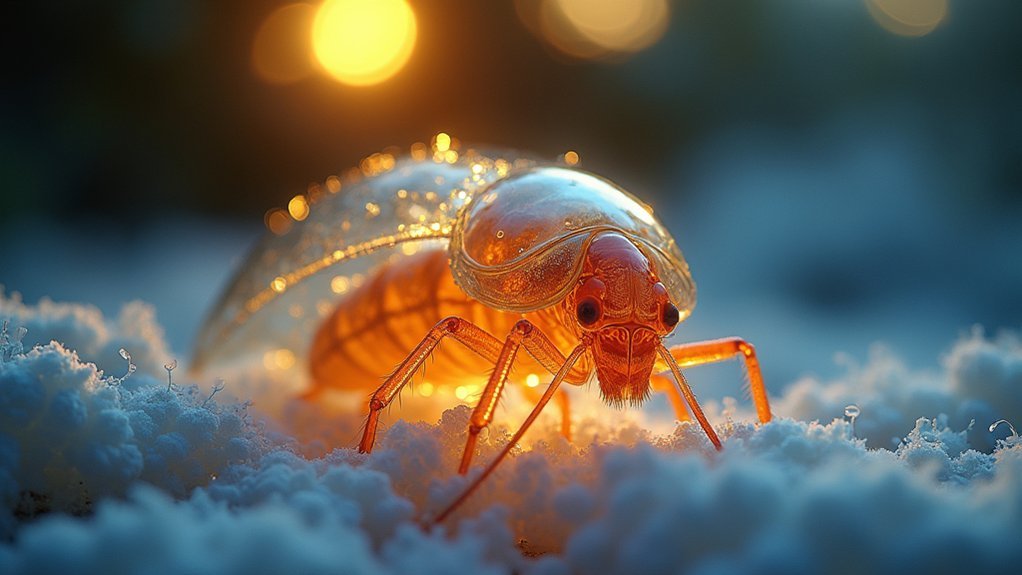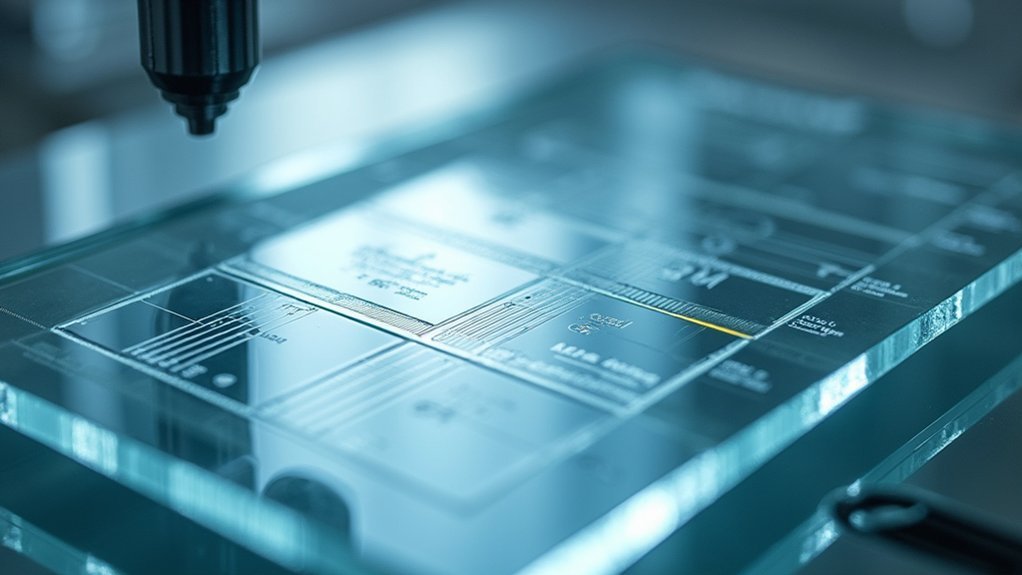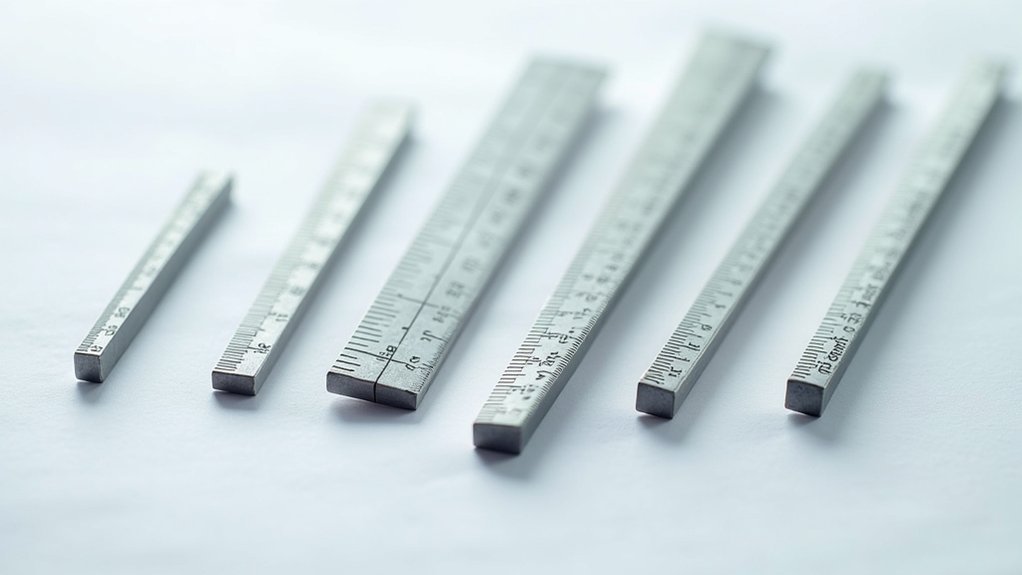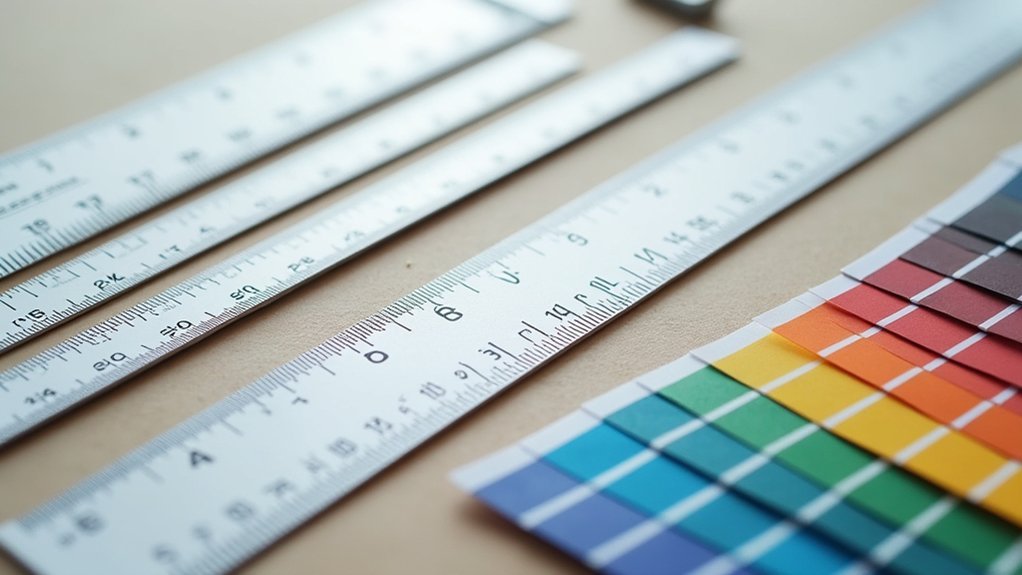For stunning microscope specimens, position your light source at a 30-45° angle to create dramatic contrast. Try DIY modifiers like aluminum foil reflectors or salvaged polarizing filters to reduce glare. Combine oblique lighting with colored filters, particularly blue ones, to neutralize backgrounds while highlighting textures. Adjust your condenser settings—slight angles and aperture manipulation control light intensity beautifully. Experiment with dark field patch stops to capture scattered light and enhance depth perception. These techniques will transform your flat images into visual masterpieces.
5 Expert Oblique Lighting Tricks For Stunning Specimens

Why settle for flat, lifeless microscope images when oblique lighting can transform ordinary specimens into stunning visual masterpieces? By directing light at an angle rather than straight through your sample, you’ll create dramatic contrast that reveals intricate details invisible in standard bright field setups.
Oblique lighting breathes life into the microscopic world, revealing hidden details through artful illumination.
Try positioning your light source at various angles to highlight surface textures and structural elements. When you combine oblique illumination with dark field techniques, you’ll achieve a striking effect where specimens appear brilliantly illuminated against a black background.
Don’t forget to experiment with your microscope’s aperture diaphragm to fine-tune light control. Adding a blue filter can greatly improve image quality by eliminating unwanted wavelengths.
These simple adjustments will elevate your microscopy, revealing complexities in specimens that would otherwise remain hidden.
Mastering the Angle: Positioning Your Light Source for Maximum Contrast
Finding the perfect angle for your light source is the cornerstone of successful oblique illumination. Position your light at a 30 to 45-degree angle to your specimen to reveal intricate textures and maximize contrast. This positioning directs the light cone across your sample rather than through it, creating dramatic shadows that highlight surface details.
Don’t settle for a single setup—experiment with different angles to discover which position best reveals your specimen’s unique features.
Remember to:
- Adjust your condenser aperture diaphragm to fine-tune the light cone and enhance depth perception
- Try incorporating a dark field patch stop to eliminate direct light while capturing scattered light
- Add colored filters, especially blue ones, to modify background tone while maintaining contrast
DIY Light Modifiers to Enhance Specimen Details

Once you’ve mastered the positioning of your light source, you can elevate your microscopy by crafting your own light modifiers from everyday materials.
Salvage polarizing filters from broken LED TV screens to dramatically reduce glare and improve contrast in your images.
Create custom reflectors using cardboard and aluminum foil to direct light at precise angles for ideal oblique illumination.
For challenging specimens, experiment with a blue filter to neutralize background colors and reveal fine details that might otherwise remain hidden.
Construct homemade dark field patch stops from opaque materials with small apertures to view specimens against a dark background, enhancing depth perception and contrast.
Consider 3D-printing custom mounts to hold your DIY light modifiers in place, streamlining your setup for consistent, high-quality observations of even the most intricate specimens.
Combining Oblique Lighting With Colored Filters for Dramatic Effects
When you pair oblique lighting with colored filters, you’ll reveal a domain of dramatic visual effects that transform ordinary specimens into striking scientific artwork. By illuminating from the side and adding colored filters—particularly blue ones—you can neutralize background colors while dramatically enhancing image contrast.
Oblique light and color filters transform mundane specimens into scientific masterpieces with enhanced contrast and neutralized backgrounds.
Try these techniques to elevate your microscopy:
- Position your light source at various angles to create shadows that highlight structural details, then add colored filters to accentuate specific features.
- Experiment with filter placement to alter perceived depth and texture, creating more dynamic visual presentations.
- Adjust both the oblique lighting angle and filter position to improve clarity and depth perception for easier analysis.
These combinations won’t just improve visibility—they’ll turn your scientific observations into visually compelling discoveries that reveal previously hidden microscopic worlds.
Adjusting Condenser Settings to Perfect Your Oblique Illumination

The heart of effective oblique illumination lies in proper condenser adjustment, which transforms ordinary microscopic views into dramatic, high-contrast images.
Start by positioning your condenser at a slight angle to direct light sideways across your specimen, creating striking shadow effects.
Manipulate the condenser aperture diaphragm carefully to control light intensity entering the specimen area. You’ll find that slight adjustments dramatically affect contrast and detail visibility.
Experiment with condenser height to locate the ideal focal point that reveals fine specimen structures.
For enhanced depth perception, try incorporating a dark field patch stop, which allows only scattered light to reach your objective.
Remember that a higher numerical aperture in your condenser system enables superior resolution when using oblique illumination techniques.
These adjustments will help you achieve the three-dimensional effects that make oblique lighting so valuable.
Frequently Asked Questions
What Is the Oblique Illumination Technique?
Oblique illumination is a microscopy technique where you’ll direct light at an angle to your specimen. It enhances contrast, reveals fine details, and creates a 3D effect without extensive staining on transparent samples.
What Is the Oblique Lighting Technique?
Oblique lighting technique is when you illuminate your specimen from the side at an angle. You’ll create shadows that enhance surface textures and provide a more three-dimensional appearance, making transparent specimens easier to observe.
What Is the Oblique Lighting Test?
You’ll use the oblique lighting test to examine specimens under angled light, which enhances surface details and creates shadows. It’s especially useful for transparent samples where traditional illumination fails to reveal subtle features.
In Summary
You’ve now got the tools to transform ordinary specimens into stunning microscopic masterpieces. Remember, it’s all about experimentation—try different angles, combine techniques, and don’t hesitate to build your own modifiers. With practice, you’ll develop an intuitive feel for how oblique lighting reveals texture and detail. Your microscopy will never be the same once you’ve mastered these illumination secrets.





Leave a Reply